5. Forbidden Planet (Fred M. Wilcox, 1956)
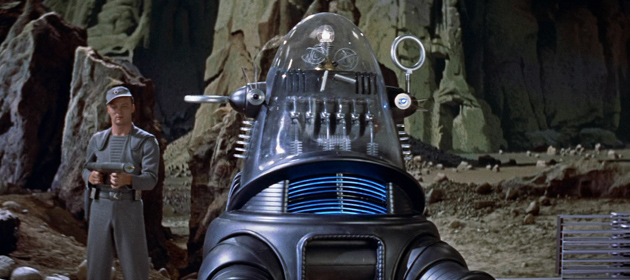
Another groundbreaking entry in the science fiction genre, Forbidden Planet not only presents an intriguing futuristic story in space but contains many significant contributions to the genre that have since become commonplace.
The story follows Commander John Adams, played by Leslie Nielsen, who is on a quest to discover what happened to a missing crew on the planet Altair IV. He discovers that only Dr. Morbius and his daughter Altaira are left alive and that a dangerous creature inhabits the planet.
The addition of Robby the Robot, Dr. Mobius’s helper, is a significant development in the use of robots as characters with personalities in science fiction films and has been widely used in the genre ever since.
The film also features state of the art animations and special effects as well as the first ever electronic soundtrack. These contributions all made Forbidden Planet a smash hit but its reputation has stayed strong through the years due to its surprisingly deep themes, especially about the human psyche. Reportedly influenced by Shakespeare’s The Tempest, Wilcox’s classic science fiction film will forever be a mainstay of the genre.
4. Things to Come (William Cameron Menzies, 1936)
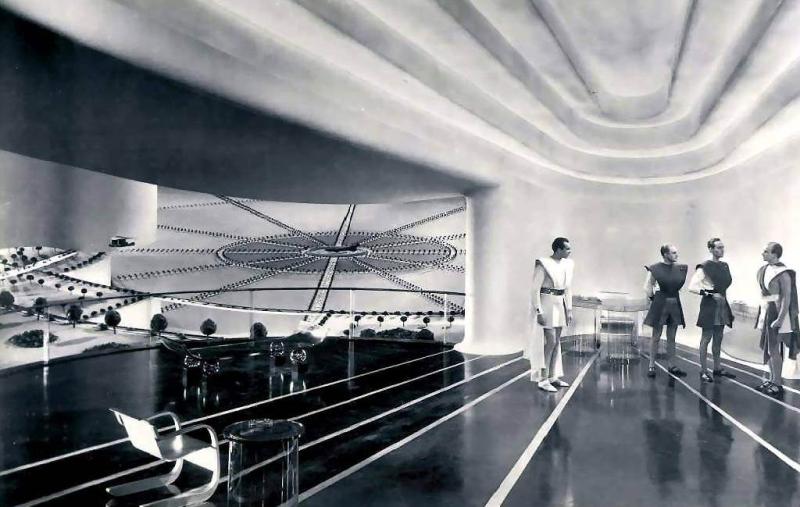
As many of the other titles on this list can confirm, H.G. Wells was the largest influence on the early science fiction films. For this sweeping science fiction story by master filmmaker William Cameron Menzies, the film is not only based on a story by H.G. Wells, but was adapted for the screen by the writer as well.
The story starts in 1940 as John Cabal and friends are having Christmas dinner. That night, however, World War II starts and Cabal is swept into the Air Force, flying planes in battles and seeing the horror of war firsthand. The film then shows a montage of the evolution of man over the next hundred years, with the technological advances as well as how bad some parts of society become.
Things to Come is very atypical of the other films based on H.G. Wells stories, as its point is not to tell a straightforward narrative, but to comment on the evolution of humanity over a long period of time.This leads to a generally unconventional style of film with uneven pacing, creating a more philosophical product instead of a thrilling science fiction extravaganza.
Still, being made by Menzies and Alexander Korda, the film has its share of breathtaking sets and sequences that induce awe, even if you aren’t interested in the film’s message. Things to Come also features a brilliant score by British composer Arthur Bliss.
3. A Trip to the Moon (Georges Melies, 1902)
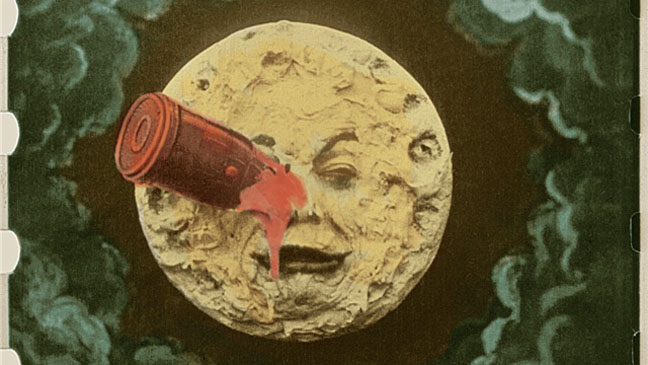
By far the earliest film on this list, early French master Georges Melies’s visionary masterpiece is one of the most influential films of all time. Running at about 15 minutes, this short piece is filled with extravagant spectacles and iconic visuals from beginning to end.
Inspired by the wondrous stories of authors like Jules Verne, Melies’s film follows a group of astronomers who embark on the titular expedition. Upon their arrival, their ship crash lands in the eye of the Man on the Moon, a shot which has come to be one of the most famous stills in cinema.
Due to the brilliant artistic mind of Melies, this pioneering gem still can captivate audiences today despite being over one hundred years old.
Although much of the events that take place on the moon are of a more fantastical nature than futuristic, the importance of the film to the science fiction genre cannot be overstated, showing how captivating the subject of space travel can be, even with the most primitive of effects. A Trip to the Moon was also referenced heavily in Martin Scorsese’s film Hugo, which featured Georges Melies as a main character.
2. The Day the Earth Stood Still (Robert Wise, 1951)
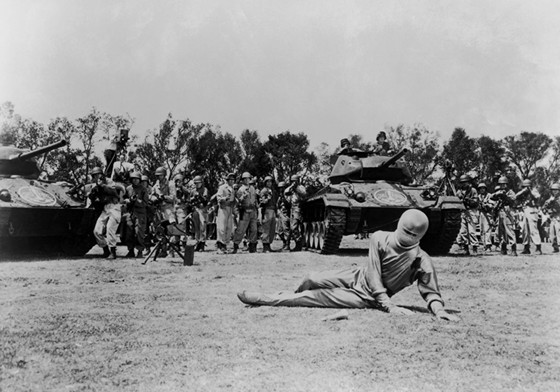
Few science fiction films have left such an enormous footprint on the landscape of American cinema as this visually stunning and thematically challenging alien film.The plot, based on a short story by Harry Bates, begins with a flying saucer landing in Washington D.C. capturing the attention of the military.
A humanoid alien descends from the spacecraft but is shot by the forces, causing a massive alien robot to attack the troops, but the alien tells it to stop. The alien, whose name is Klaatu, has an important message for Earth’s leaders but the government is keeping him hostage in a secret facility. Klaatu breaks out and develops a relationship with a young woman and her son while trying to evade the secret forces.
The film rose to popularity due to its remarkable effects for the time, especially the spaceship and the massive robot, Gort. It has stayed popular, however, for its poignant relationships and its commentary on humanity in modern times.
The government’s aggressive and violent reaction to Klaatu’s arrival conveys the film’s deeper message about humanity’s tendency towards war, which could very well be its undoing. This message is also shown in Klaatu’s speech to the leaders of the world regarding other galactic empires and their peaceful diplomacy. The film also features a memorable score by Bernard Herrmann.
1. Metropolis (Fritz Lang, 1927)
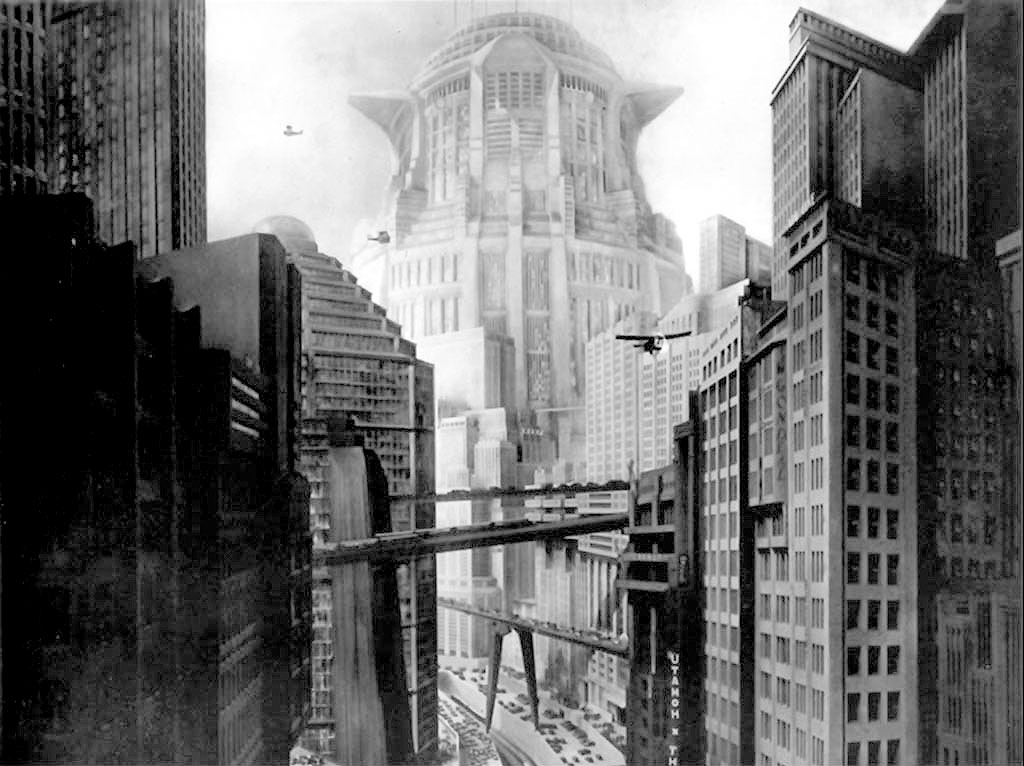
The greatest masterpiece of the German Expressionist movement and often regarded as one of the greatest films ever made, Fritz Lang’s science fiction epic remains one of the only silent films that reaches a wide base of popularity.
Based on a novel written by Lang’s wife Thea von Harbou, this socially charged tale takes place in a futuristic city where the workers live in a grimy lower section, belittled by the extravagant towers of the rich.
Fredersen, the master of the city, in trying to quell a worker’s revolt, replaces their ringleader Maria with a robot that causes destruction throughout the Metropolis. Fredersen’s son, Freder, who has recently discovered the inequalities in the city, must save Maria and bring balance to society.
Lang’s epic was groundbreaking for a myriad of reasons. The production design was strikingly unique, combining art deco styles with gothic architecture to create the atmosphere of the dark, futuristic city.
Many of the film’s sets rivaled the most ambitious Hollywood projects of the time, most notably those of the enormous complex machines beneath the city. This design combined with Lang’s masterful cinematic vision makes Metropolis one of the most visually striking movies of the silent era.
Like many silent films, the complete movie has since been lost, but thanks to the work of many historians, a nearly complete copy exists today.
Author Bio: Matthew Benbenek is an undergraduate Mechanical Engineering student at the University of Wisconsin – Madison. He has a passion for film, music and literature and, when not watching movies, is an amateur director and violin player.